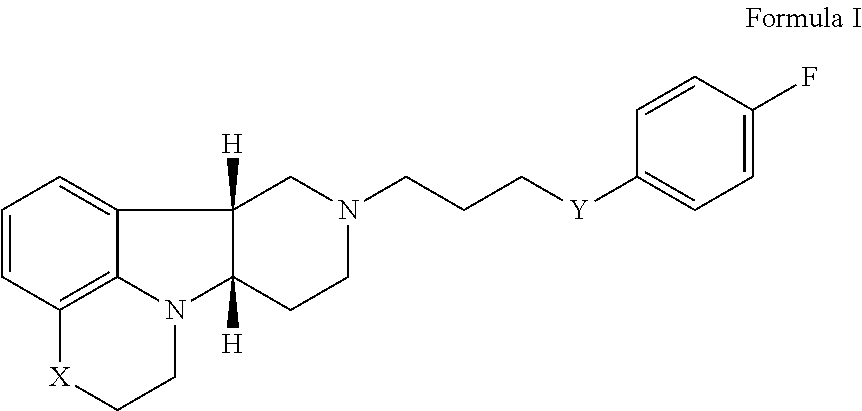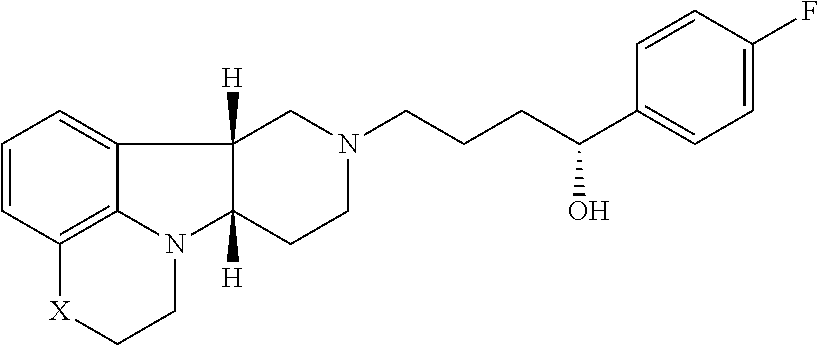Novel compositions and methods
a heterocycle fused and gamma-aminobutyric acid technology, applied in the field of substitution of heterocycle fused gamma-aminobutyric acid, can solve the problems of no cure or standard treatment for dementia, drug compositions, side effects that do not treat affective symptoms and/or other behavior disruptions, and achieve the effects of reducing behavioral disturbances, reducing side effects, and reducing side effects
- Summary
- Abstract
- Description
- Claims
- Application Information
AI Technical Summary
Benefits of technology
Problems solved by technology
Method used
Image
Examples
example 1
Effect of Compound A on Reversal of Social Isolation resulted from Repeated Stress
[0105]Mice are tested for social isolation behavior after repeated exposure (once daily for 10 days) to an aggressive resident intruder mouse in the social defeat / resident intruder paradigm as describe by Berton et al., Science (2006) 311:864-868, the contents of which are incorporated by reference. Mice are then dosed chronically, once daily for 30 d, with either vehicle (5% DMSO / 5% Tween-20 / 15% PEG400 / 75% water, 6.7 ml / kg volume) or Compound A (1 mg / kg, ip) in vehicle solution. On the day after the last drug or vehicle treatment, the mice are placed in the open field in the presence of a resident intruder mouse and the animal's behavior recorded by videotape for 10 min. The videotapes are then scored for the total time each mouse spent during a 10 min period in specified open-field quadrants. The total time (sec) spent by mice representing each drug treatment group in the Interaction Zone in proximit...
PUM
| Property | Measurement | Unit |
|---|---|---|
| time | aaaaa | aaaaa |
| physical | aaaaa | aaaaa |
| binding affinity | aaaaa | aaaaa |
Abstract
Description
Claims
Application Information
 Login to View More
Login to View More - R&D
- Intellectual Property
- Life Sciences
- Materials
- Tech Scout
- Unparalleled Data Quality
- Higher Quality Content
- 60% Fewer Hallucinations
Browse by: Latest US Patents, China's latest patents, Technical Efficacy Thesaurus, Application Domain, Technology Topic, Popular Technical Reports.
© 2025 PatSnap. All rights reserved.Legal|Privacy policy|Modern Slavery Act Transparency Statement|Sitemap|About US| Contact US: help@patsnap.com



